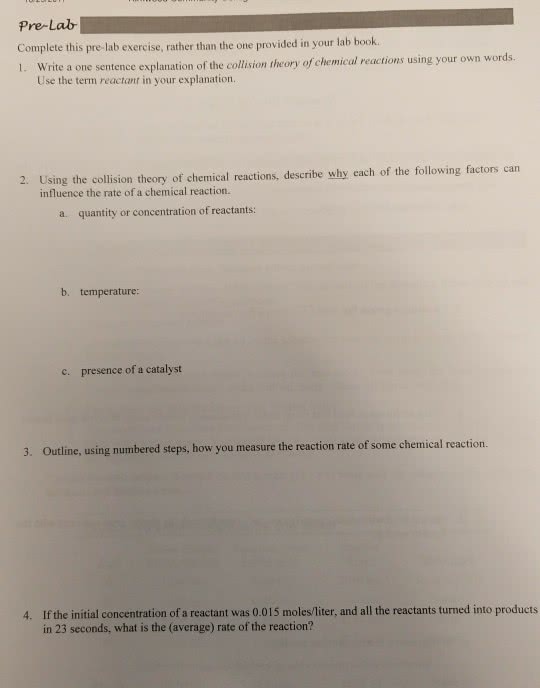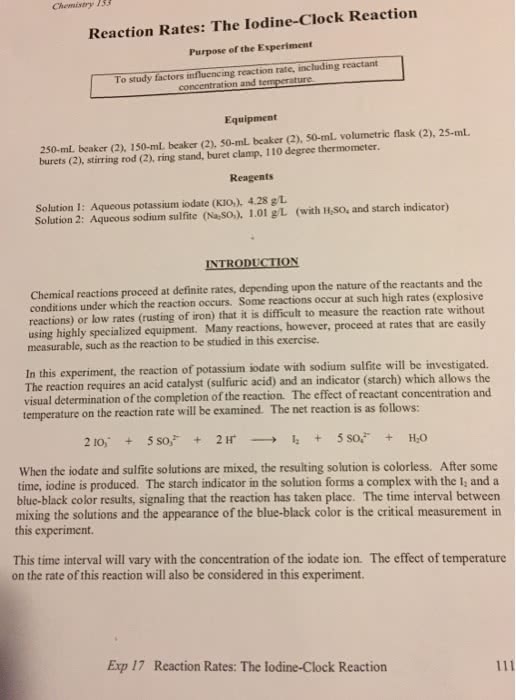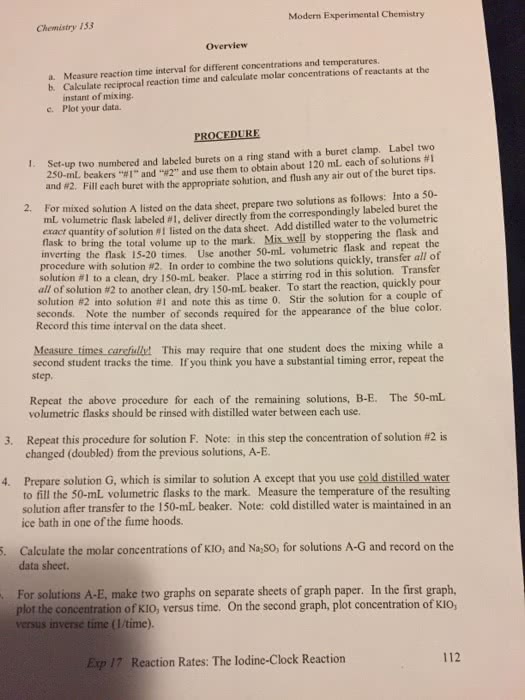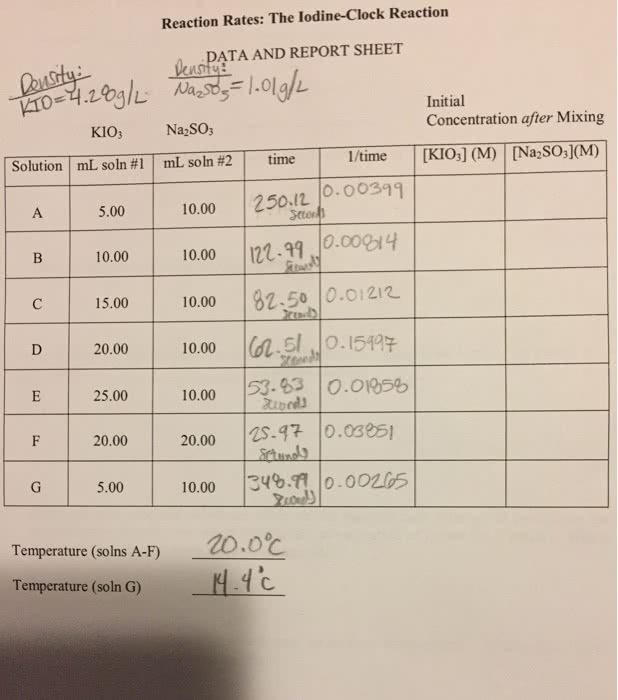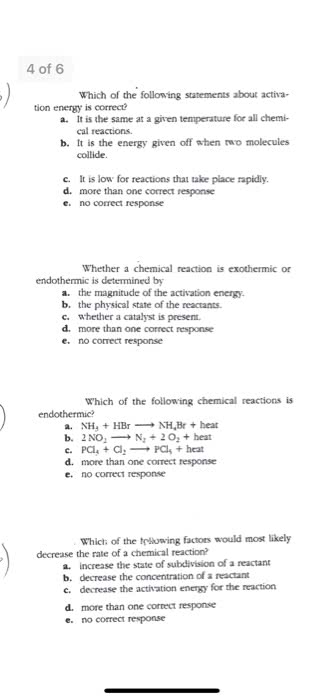CHEM 1220 Chapter Notes - Chapter 14: Molecularity, Chemical Kinetics, Radiant Energy
Document Summary
The speed at which a chemical reaction occurs is the reaction rate: chemical kinetics is the study of how fast chemical reactions occur, different factors affect rates of reactions. The speed of a reaction is defined as the change that occurs per unit time. For a reaction a b: note the negative sign! This reminds us that rate is being expressed in terms of the disappearance of a reactant: spectroscopy is the interaction of light (radiant energy) with matter. In most chemical reactions we will determine the reaction rate by monitoring a change in concentration (of a reactant or product). The change in slope indicates a change in rate. The instantaneous rate is determined from the slope at a particular point in time. It is typical for rates to decrease as a reaction proceeds because the concentration of reactants decreases.



